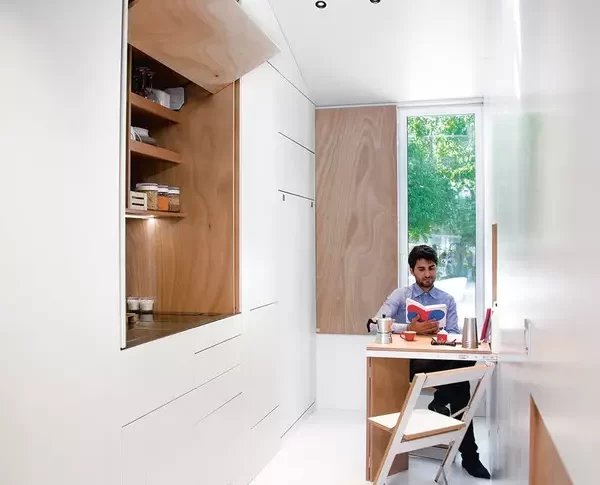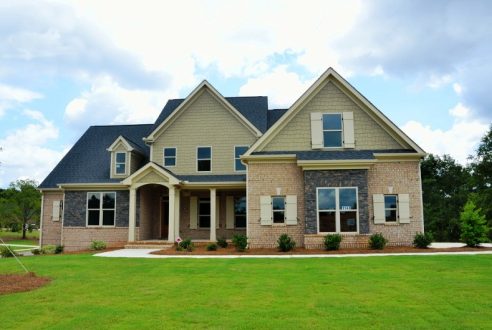In a world where “bigger is better” has long been the prevailing attitude, a growing number of people are embracing the idea of minimalism, sustainability, and a simpler way of life. This is where the tiny house movement, a trend within the real estate world, comes into play. Tiny houses represent more than just small dwellings; they embody a lifestyle shift towards minimalism and a deep appreciation for sustainable living. In this blog, we’ll explore the world of micro-living and the tiny house movement, delving into what it is, why it’s gaining momentum, and the benefits it offers.
What Is the Tiny House Movement?
The tiny house movement is a social and architectural phenomenon that advocates for downsizing and simplifying one’s lifestyle by choosing to live in significantly smaller spaces. These tiny houses, often ranging from 100 to 400 square feet (or even smaller), are designed to maximize efficiency and functionality, offering a comfortable living space with a minimal environmental footprint.
Why Are People Embracing Tiny Living?
The tiny house movement is more than just a trend; it’s a response to several societal and environmental factors:
- Economic Sustainability
For many people, traditional homeownership has become financially burdensome, with rising housing costs and increasing mortgage debt. Tiny houses offer a more affordable option, often requiring less capital to build and maintain.
- Environmental Responsibility
Living in a smaller space results in a smaller carbon footprint. Tiny houses typically consume less energy and resources, contributing to a more sustainable and environmentally friendly lifestyle.
- Decluttered Living
The idea of downsizing and decluttering appeals to many individuals who are looking to simplify their lives. Fewer possessions mean less time and effort spent on maintenance and organization.
- Flexibility and Mobility
Tiny houses are often built on trailers, making them portable. This mobility allows homeowners to change locations more easily, living closer to nature or moving to new job opportunities without the hassle of selling or buying a home.
The Benefits of Tiny Living
- Financial Freedom
One of the most significant advantages of tiny living is financial freedom. Tiny house owners often enjoy lower monthly expenses, reduced utility bills, and less debt. This financial freedom can open up opportunities for travel, personal projects, or pursuing a passion.
- Reduced Environmental Impact
Tiny houses are eco-friendly by design. They typically use fewer materials in construction, consume less energy for heating and cooling, and have a smaller carbon footprint. This lifestyle choice aligns with the principles of sustainability and conservation.
- Simplified Lifestyle
The minimalist lifestyle that tiny houses promote can lead to reduced stress and increased well-being. With fewer possessions and responsibilities, individuals can focus on what truly matters to them, whether it’s spending time with family, pursuing hobbies, or enjoying nature.
- Community Building
Many tiny house communities and villages are popping up across the United States, fostering a strong sense of community among like-minded individuals. This communal aspect allows for shared resources, support, and a greater sense of belonging.
The Challenges of Tiny Living
While tiny living offers numerous advantages, it’s not without its challenges:
- Limited Space
Living in a tiny house means adapting to a smaller living area, which may not be suitable for everyone, especially those with families or individuals who value space and privacy.
- Zoning and Legal Issues
Zoning laws and building codes can pose challenges to tiny house living, making it difficult to find suitable locations for these small dwellings.
- Lifestyle Adjustment
Tiny living requires a significant lifestyle adjustment, including downsizing possessions and adapting to the practicalities of small-space living.
The Evolution of Micro-Living
The concept of micro-living isn’t confined to tiny houses on wheels. It has evolved to include various small-space living solutions, such as micro-apartments, container homes, and modular living spaces. These innovative designs continue to promote the idea that living small can mean living smart, comfortable, and environmentally responsible.
Final Thoughts
The tiny house movement represents a compelling shift in how we view homeownership and lifestyle choices. It emphasizes the value of experiences and well-being over material possessions, and it encourages a more sustainable, eco-conscious way of living. While tiny living may not be suitable for everyone, its principles of minimalism and downsizing can inspire individuals to reassess their priorities and consider a simpler, more meaningful life. As this movement continues to grow, it serves as a reminder that sometimes, less truly is more, and that the pursuit of happiness doesn’t always require a larger house, but a more fulfilled life.



